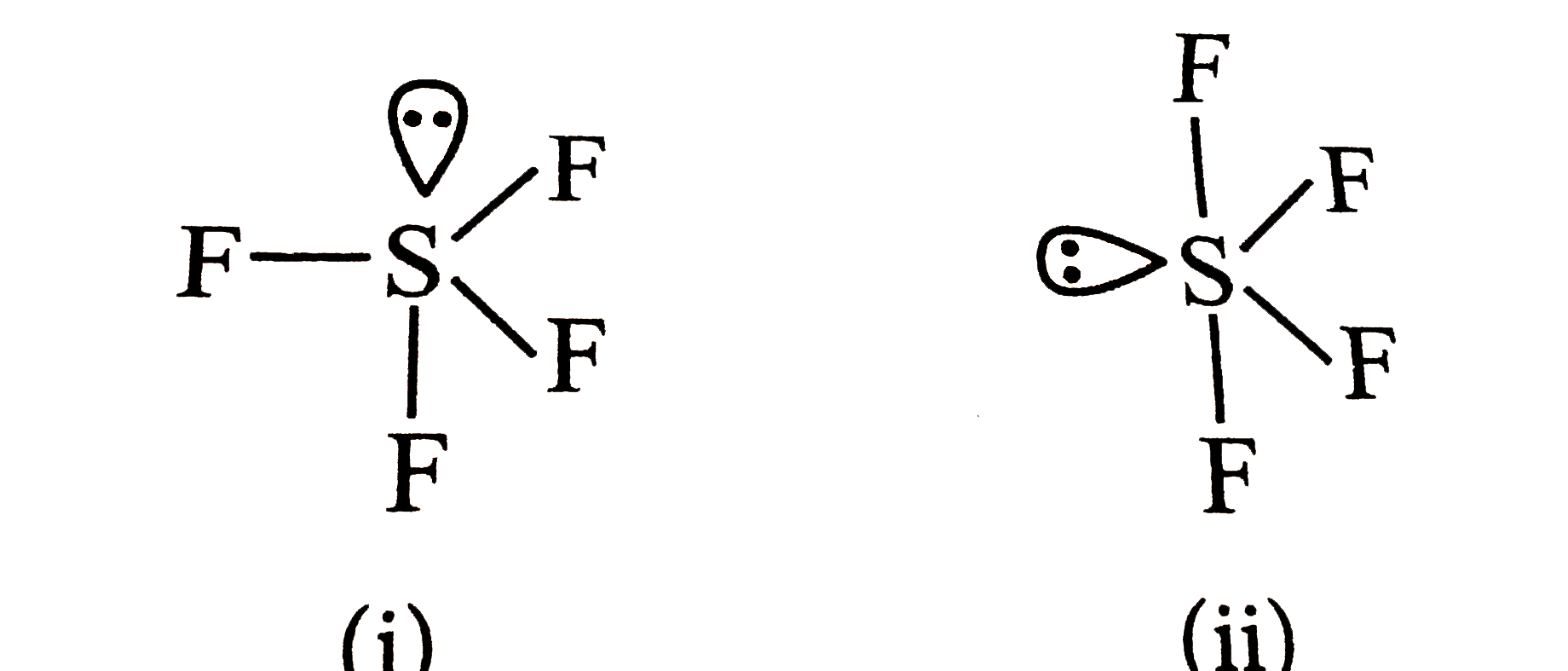has _____shape.
T-shape
Bent
Octahedral
see saw
The correct Answer is:D
To determine the shape of SF₄ (sulfur tetrafluoride), we can follow these steps:
Step 1: Determine the Valence Electrons
Sulfur (S) is in group 16 of the periodic table and has 6 valence electrons. Each fluorine (F) atom has 7 valence electrons, and since there are 4 fluorine atoms, they contribute a total of 28 valence electrons (4 × 7 = 28).
Total valence electrons = 6 (from S) + 28 (from 4 F) = 34 valence electrons.
Step 2: Draw the Lewis Structure
In the Lewis structure of SF₄, sulfur will form single bonds with each of the four fluorine atoms. Each bond uses 2 electrons. Therefore, 4 bonds will use 8 electrons (4 × 2 = 8).
Remaining electrons = 34 - 8 = 26 electrons.
After forming the bonds, the remaining electrons will be placed on the sulfur atom as lone pairs. Since sulfur can expand its octet, it can accommodate more than 8 electrons.
Step 3: Account for Lone Pairs
After forming 4 bonds with fluorine, sulfur will have 2 lone pairs of electrons left.
Step 4: Determine the Electron Geometry
The electron geometry around sulfur can be determined by counting the total number of regions of electron density (bonding pairs + lone pairs). In SF₄, there are:
- 4 bonding pairs (from the 4 S-F bonds)
- 1 lone pair
This gives a total of 5 regions of electron density.
Step 5: Identify the Molecular Shape
The electron geometry for 5 regions of electron density is trigonal bipyramidal. However, the presence of the lone pair affects the molecular shape. The lone pair occupies one of the equatorial positions, leading to a distortion of the shape.
The resulting molecular shape is seesaw.
Conclusion
Thus, the shape of SF₄ is seesaw.
---
Sulfur (S) is in group 16 of the periodic table and has 6 valence electrons. Each fluorine (F) atom has 7 valence electrons, and since there are 4 fluorine atoms, they contribute a total of 28 valence electrons (4 × 7 = 28).
In the Lewis structure of SF₄, sulfur will form single bonds with each of the four fluorine atoms. Each bond uses 2 electrons. Therefore, 4 bonds will use 8 electrons (4 × 2 = 8).
After forming 4 bonds with fluorine, sulfur will have 2 lone pairs of electrons left.
The electron geometry around sulfur can be determined by counting the total number of regions of electron density (bonding pairs + lone pairs). In SF₄, there are:
- 4 bonding pairs (from the 4 S-F bonds)
- 1 lone pair
The electron geometry for 5 regions of electron density is trigonal bipyramidal. However, the presence of the lone pair affects the molecular shape. The lone pair occupies one of the equatorial positions, leading to a distortion of the shape.
Thus, the shape of SF₄ is seesaw.
Topper's Solved these Questions
- PRACTICE PAPER 2Book:NCERT FINGERTPS ENGLISHChapter:PRACTICE PAPER 2Exercise:Practice Paper 2
Explore 44 Videos
- PRACTICE PAPER 1Book:NCERT FINGERTPS ENGLISHChapter:PRACTICE PAPER 1Exercise:Practice Paper 1
Explore 44 Videos
- PRACTICE PAPER 3Book:NCERT FINGERTPS ENGLISHChapter:PRACTICE PAPER 3Exercise:Practice Paper 3
Explore 46 Videos
Similar Questions
Knowledge Check
Assertion : PF5,SF6andH2SO4 are the examples of expanded octet molecules .
Reason : Octet rule is not applicable to the second period elements of the periodic table.Aboth assertion and reason are true and reason is the correct explanation of assertion.Bboth assertion and reason are true but reason in not the correct explanation of assertion.Cassertion is true but reason is false.Dboth assertion and reason are false.Molecular shape of SF4,CF4 and XeF4 are
Athe same with 2, 0 and 1 lone pairs of electrons respectivelyBthe same with 1, 1 and 1 lone pairs of electrons respectivelyCdifferent with 0, 1 and 2 lone pairs of electrons respectivelyDdifferent with 1, 0 and 2 lone pairs of electrons respectively.
Species having the formula XZ4 is given below SF4, Define shape on the basis of the location of X and Z atoms.
View SolutionSF2,SF4 and SF6 have the hybridisation at sulphur atom respectively as .
View SolutionSF2,SF4 and SF6 have the hybridisation at sulphur atom respectively as .
View SolutionWhich of the following shapes of SF4 is more stable and why?

View SolutionSF6 and SF4 involves hybridisation of the type ____ and ____ respectively.
View SolutionThe state of hybridisation for the transition state of hydrolysis mechanism of BCI3 and SF4 are respectively
View Solution